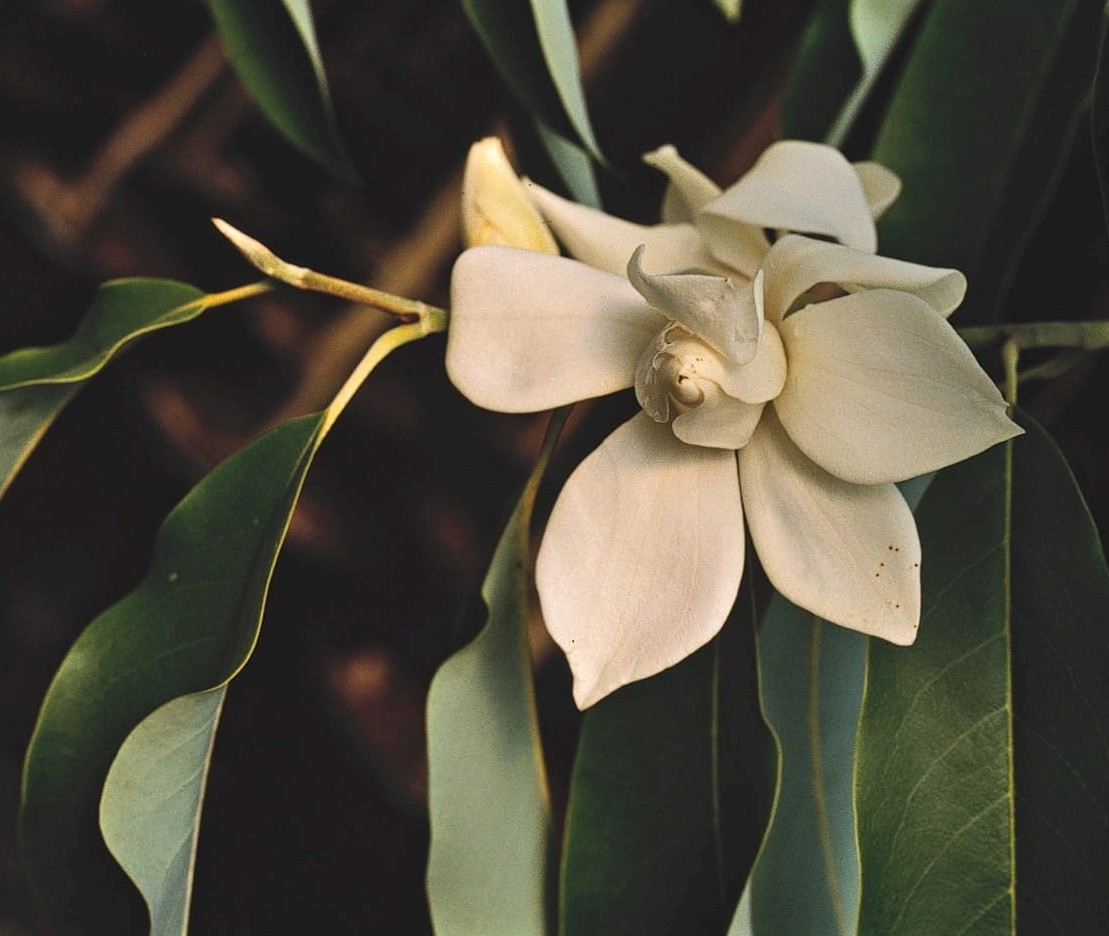Magnolia cavaleriei
Sponsor
Kindly sponsored by
The Roy Overland Charitable Trust

Credits
Julian Sutton (2022)
Recommended citation
Sutton, J. (2022), 'Magnolia cavaleriei' from the website Trees and Shrubs Online (treesandshrubsonline.
Genus
- Magnolia
- Section Michelia
Synonyms
- Michelia cavaleriei Finet & Gagnep.
Other taxa in genus
- Magnolia acuminata
- Magnolia × alba
- Magnolia amabilis
- Magnolia amoena
- Magnolia aromatica
- Magnolia biondii
- Magnolia × brooklynensis
- Magnolia campbellii
- Magnolia cathcartii
- Magnolia caveana
- Magnolia champaca
- Magnolia changhungtana
- Magnolia chapensis
- Magnolia compressa
- Magnolia conifera
- Magnolia Cultivars A
- Magnolia Cultivars B
- Magnolia Cultivars C
- Magnolia Cultivars D
- Magnolia Cultivars E
- Magnolia Cultivars F
- Magnolia Cultivars G
- Magnolia Cultivars H–I
- Magnolia Cultivars J
- Magnolia Cultivars K
- Magnolia Cultivars L
- Magnolia Cultivars M
- Magnolia Cultivars N–O
- Magnolia Cultivars P
- Magnolia Cultivars Q–R
- Magnolia Cultivars S
- Magnolia Cultivars T
- Magnolia Cultivars U–V
- Magnolia Cultivars W–Z
- Magnolia cylindrica
- Magnolia dandyi
- Magnolia dawsoniana
- Magnolia de Vos and Kosar hybrids
- Magnolia decidua
- Magnolia delavayi
- Magnolia denudata
- Magnolia doltsopa
- Magnolia duclouxii
- Magnolia ernestii
- Magnolia figo
- Magnolia floribunda
- Magnolia × foggii
- Magnolia fordiana
- Magnolia foveolata
- Magnolia fraseri
- Magnolia fulva
- Magnolia globosa
- Magnolia × gotoburgensis
- Magnolia grandiflora
- Magnolia grandis
- Magnolia Gresham hybrids
- Magnolia guangdongensis
- Magnolia hookeri
- Magnolia insignis
- Magnolia Jury hybrids
- Magnolia × kewensis
- Magnolia kobus
- Magnolia kwangtungensis
- Magnolia laevifolia
- Magnolia lanuginosa
- Magnolia leveilleana
- Magnolia liliiflora
- Magnolia × loebneri
- Magnolia lotungensis
- Magnolia macclurei
- Magnolia macrophylla
- Magnolia martini
- Magnolia maudiae
- Magnolia nitida
- Magnolia obovata
- Magnolia officinalis
- Magnolia opipara
- Magnolia × proctoriana
- Magnolia × pruhoniciana
- Magnolia rostrata
- Magnolia salicifolia
- Magnolia sapaensis
- Magnolia sargentiana
- Magnolia sieboldii
- Magnolia sinensis
- Magnolia sinica
- Magnolia sinostellata
- Magnolia × soulangeana
- Magnolia sprengeri
- Magnolia stellata
- Magnolia tamaulipana
- Magnolia × thomsoniana
- Magnolia tripetala
- Magnolia × veitchii
- Magnolia virginiana
- Magnolia × wieseneri
- Magnolia wilsonii
- Magnolia xinganensis
- Magnolia yunnanensis
- Magnolia yuyuanensis
- Magnolia zenii
Evergreen tree to 10 m, multistemmed. Bark grey-white. Branchlets about 4 mm in diameter, ageing to black, and densely covered with silvery to reddish appressed hairs. Leaves thin, leathery, 10–20(–24) × 3.5–7 cm, narrowly oblong to narrowly obovate-oblong; upper surface dark green with scattered hairs, lower surface glaucous with silvery to reddish appressed hairs; veins conspicuous on both surfaces, 11–15 secondary veins on each side of the midrib, margins entire; base cuneate; apex acute to shortly acuminate; petiole 1.5–3 cm long without stipule scars; stipules free from petiole and densely covered with short or long, clear or brown hairs. Flowers on axillary shoots 0.5–2.5 cm long, white, fragrant; tepals 12, outer three to four tepals 2.5–4 cm long, the inner tepals narrowly obovate to spathulate becoming gradually smaller; stamens yellowish grey; gynoecium stipitate with 6–14 carpels, hairy. Fruits 5–15 cm long, greenish brown and spicate; ripe carpels dark brown, ovoid to obovoid, smooth or lenticellate, 1–2.5 cm long and beaked; dehiscing along both dorsal and ventral sutures. Flowering March, fruiting September to October (China). Diploid 2n=38. (Xia, Liu & Nooteboom 2008; Chen & Nooteboom 1993; Liu et al. 2004).
Distribution China Fujian, Guangdong, Guangxi, Guizhou, Hubei, Hunan, Sichuan, Yunnan
Habitat Forest, 800–2400 m.
USDA Hardiness Zone 7b-9
RHS Hardiness Rating H5
Conservation status Least concern (LC)
This wide-ranging michelia of southern China is close to M. maudiae in general appearance, distinguished by its 12 tepals and longer leaves. These species form a taxonomically difficult complex, which requires further work by botanists in the field (R. Figlar pers. comm. 2022). The plant first described as Michelia platypetala Hand.-Mazz. has sometimes been included within this species as Magnolia cavaleriei var. platypetala (Hand.-Mazz.) N.H. Xia (Xia, Liu & Nooteboom 2008). However, we treat it as M. maudiae var. platypetala on the advice of Richard Figlar (pers. comm. 2022).
Magnolia cavaleriei is established in cultivation in both North America and Europe, although much less common than either M. maudiae or M. m. var. platypetala. It reached flowering size at around 4 m in Oregon (S. Hogan, pers. comm. 2007). At the JC Raulston Arboretum it was planted in a lath house, which it now reaches well above; flowering from December to March its white flowers can be ‘stunning against the clear blue winter sky’ of N Carolina, but they are prone to frost damage (Weathington 2019). In Britain, a specimen at Tregrehan, Cornwall, had reached 6 m × 31 cm by 2014 (Tree Register 2021).
The specific name commemorates the French missionary-botanist Pierre Julian Cavalerie, who collected the type specimen in Guizhou.

